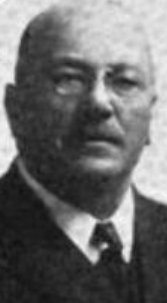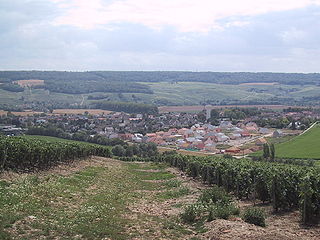
Champagne is a sparkling wine originated and produced in the Champagne wine region of France under the rules of the appellation, which demand specific vineyard practices, sourcing of grapes exclusively from designated places within it, specific grape-pressing methods and secondary fermentation of the wine in the bottle to cause carbonation.

The wine region within the historical province of Champagne in the northeast of France is best known for the production of champagne, the sparkling white wine that bears the region's name. EU law and the laws of most countries reserve the term "champagne" exclusively for wines that come from this region located about 160 kilometres (100 miles) east of Paris. The viticultural boundaries of Champagne are legally defined and split into five wine-producing districts within the historical province: Aube, Côte des Blancs, Côte de Sézanne, Montagne de Reims, and Vallée de la Marne. The city of Reims and the town of Épernay are the commercial centers of the area. Reims is famous for its cathedral, the venue of the coronation of the French kings and a UNESCO World Heritage Site.

Taittinger is a French wine family who are famous producers of Champagne. The estate is currently headed by Vitalie Taittinger, who is the daughter of Pierre-Emmanuel Taittinger, a member of the consultative committee of the Banque de France. Its diversified holdings included Champagne Taittinger, Société du Louvre and Concorde Hotels, whose flagship is the famed Hotel de Crillon on the Place de la Concorde in Paris, France as well as the Loire Valley wine-producing firm of Bouvet-Ladubay, and a partnership in Domaine Carneros in California. All these holdings were sold to Starwood Capital in 2005. The family re-acquired the house of Champagne Taittinger in 2006 after securing financial support from the Crédit Agricole bank and also the backing of trade organisations.

Épernay is a commune in the Marne department of northern France, 130 km north-east of Paris on the mainline railway to Strasbourg. The town sits on the left bank of the Marne at the extremity of the Cubry valley which crosses it.

Paul Masson was an early pioneer of California viticulture known for his brand of Californian sparkling wine.

Louis Roederer is a producer of champagne based in Reims, France. Founded in 1776, the business was inherited and renamed by Louis Roederer in 1833. It remains as one of the few independent and family-run maisons de champagne. Over 3.5 million bottles of Louis Roederer champagne are shipped each year to more than 100 countries.
GALLO is a winery and distributor headquartered in Modesto, California. It was founded in 1933 by Ernest Gallo and Julio Gallo of the Gallo family, and is the largest exporter of California wines. It is the largest wine producer in the world, producing over 3% of the world's entire annual supply of 35 billion bottles with an annual revenue of $5.3 billion it is also the largest family-owned winery in the United States. Gallo provides about 3,500 jobs to Modesto residents and 2,500 jobs in other parts of the state, country, and world.

Veuve Clicquot Ponsardin is a Champagne house founded in 1772 and based in Reims. It is one of the largest Champagne houses. Madame Clicquot is credited with major breakthroughs, creating the first known vintage champagne in 1810, and inventing the riddling table process to clarify champagne in 1816. In 1818, she invented the first known blended rosé champagne by blending still red and white wines, a process still used by the majority of champagne producers.

The Champagne Riots of 1910 and 1911 resulted from a series of problems faced by grape growers in the Champagne area of France. These included four years of disastrous crop losses, the infestation of the phylloxera louse, low income and the belief that wine merchants were using grapes from outside the Champagne region. The precipitating event may have been the announcement in 1908 by the French government that it would delimit by decree the exact geographic area that would be granted economic advantage and protection by being awarded the Champagne appellation. This early development of Appellation d'Origine Contrôlée regulation benefitted the Marne and Aisne districts to the significant exclusion of the Aube district which included the town of Troyes—the historic capital of the Champagne region.
Krug Champagne is a Champagne house founded by Joseph Krug in 1843. It is based principally in Reims, the main city in France's Champagne region and is one of the famous Champagne houses that formed part of the Grandes marques. Today the house is majority owned by the multinational conglomerate LVMH Moët Hennessy – Louis Vuitton S.E. whose portfolio includes other well known wine brands such as Moët & Chandon, Veuve Clicquot, Château d'Yquem and Ruinart. Despite LVMH's majority ownership, the Krug family is still actively involved in all the key decisions of the house but does not manage the day-to-day operations.

Bollinger is a French Champagne house, a producer of luxury sparkling wines from the Champagne region. They produce several labels of Champagne under the Bollinger name, including the vintage Vieilles Vignes Françaises, Grande Année and R.D. as well as the non-vintage Special Cuvée. Founded in 1829 in Aÿ by Hennequin de Villermont, Paul Renaudin and Jacques Bollinger, the house continues to be run by members of the Bollinger family. In Britain, Bollinger Champagnes are affectionately known as "Bolly".
The glossary of wine terms lists the definitions of many general terms used within the wine industry. For terms specific to viticulture, winemaking, grape varieties, and wine tasting, see the topic specific list in the "See also" section below.

Armand de Brignac, known colloquially as Ace of Spades, is a French Champagne owned by Shawn "Jay-Z" Carter and LVMH. The brand is produced by Champagne Cattier and sold in opaque metallic bottles. The brand's first bottling, Armand de Brignac Brut Gold, is identifiable by its gold bottle with French pewter Ace of Spades labels.

Ruinart is the oldest established Champagne house, exclusively producing champagne since 1729. Founded by Nicolas Ruinart in the Champagne region in the city of Reims, it is currently owned by LVMH Moët Hennessy Louis Vuitton SA.

Laurent-Perrier is a Champagne house founded in 1812. It is the main company of the Laurent-Perrier Group, whose other flagship brands include the houses of Salon, De Castellane and Delamotte. Laurent-Perrier Group also acquired Chateau Malakoff as of 2004. With over 1,200 grape growers with supply contracts, Laurent-Perrier exports to more than 120 countries.
Charles Heidsieck is the smallest of the Grandes Marques champagne Houses. Based in the Reims region of Champagne, it is one of the best-known producers for both vintage and non-vintage cuvée. It has been part of EPI group since 2011. The house was founded in 1851 by the French champagne maker Charles Camille Heidsieck, who became known as Champagne Charlie.

The history of Champagne began when the Romans planted vineyards in this region of northeast France in the 5th century, or possibly earlier. Over centuries, Champagne evolved from being a pale, pinkish still wine to a sparkling wine. When Hugh Capet was crowned King of France in 987 at the cathedral of Reims, he started a tradition that brought successive monarchs to the region—with the local wine being on prominent display at the coronation banquets. The early wine of the Champagne region was a pale, pinkish wine made from Pinot noir.
Schramsberg Vineyards is a winery located in Calistoga, California in the Napa Valley region. The vineyard, which was founded in 1862 by the German immigrant Jacob Schram, produces a series of sparkling wines using the same method as champagne. Schramsberg is considered one of the premium brands in the production of sparkling wine in California and the first U.S. wine to "match the style and quality of the best French Champagnes".

Corinne Mentzelopoulos-Petit is a French-Greek businesswoman who owns and runs the prestigious Bordeaux wine estate, Château Margaux. Her wines have often won Bordeaux's Wine of the Vintage. She has been cited as one of the leading women in the wine industry.













